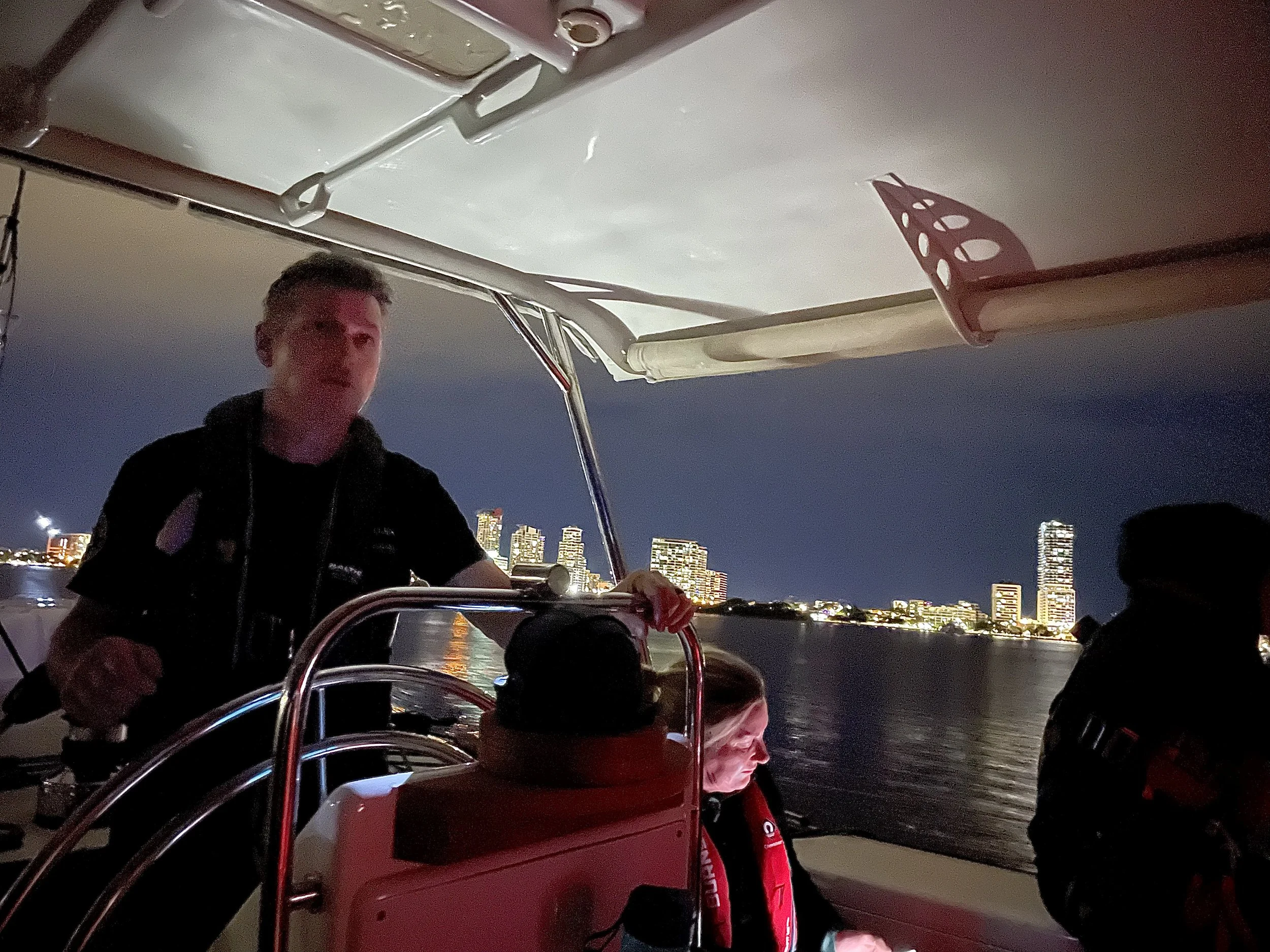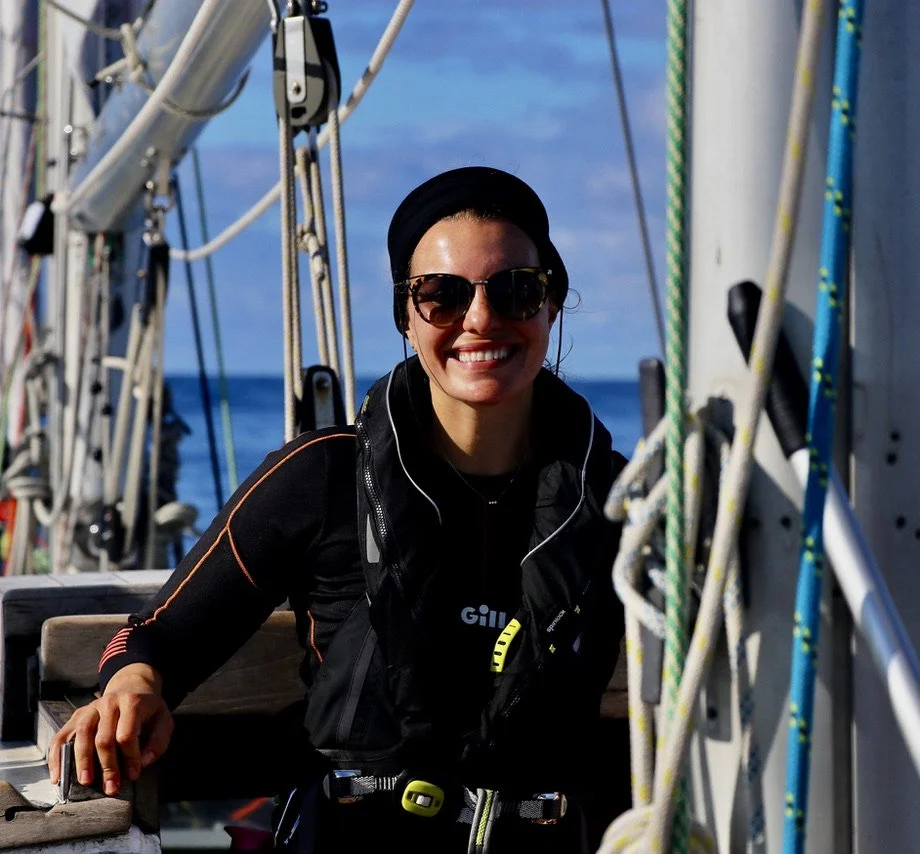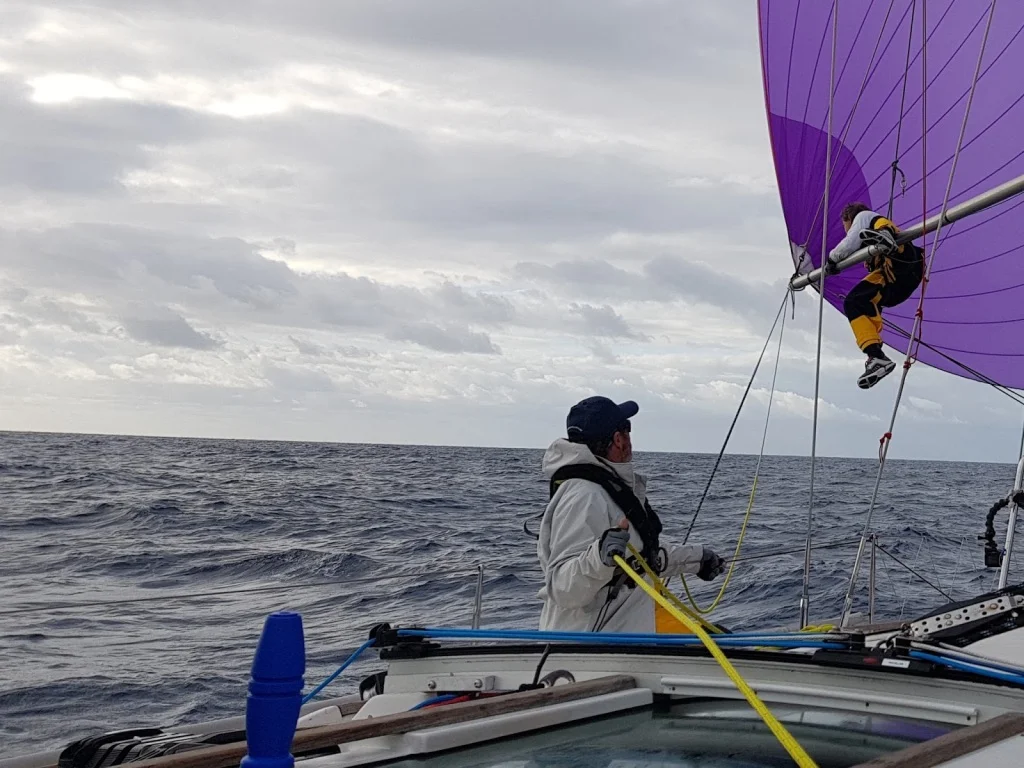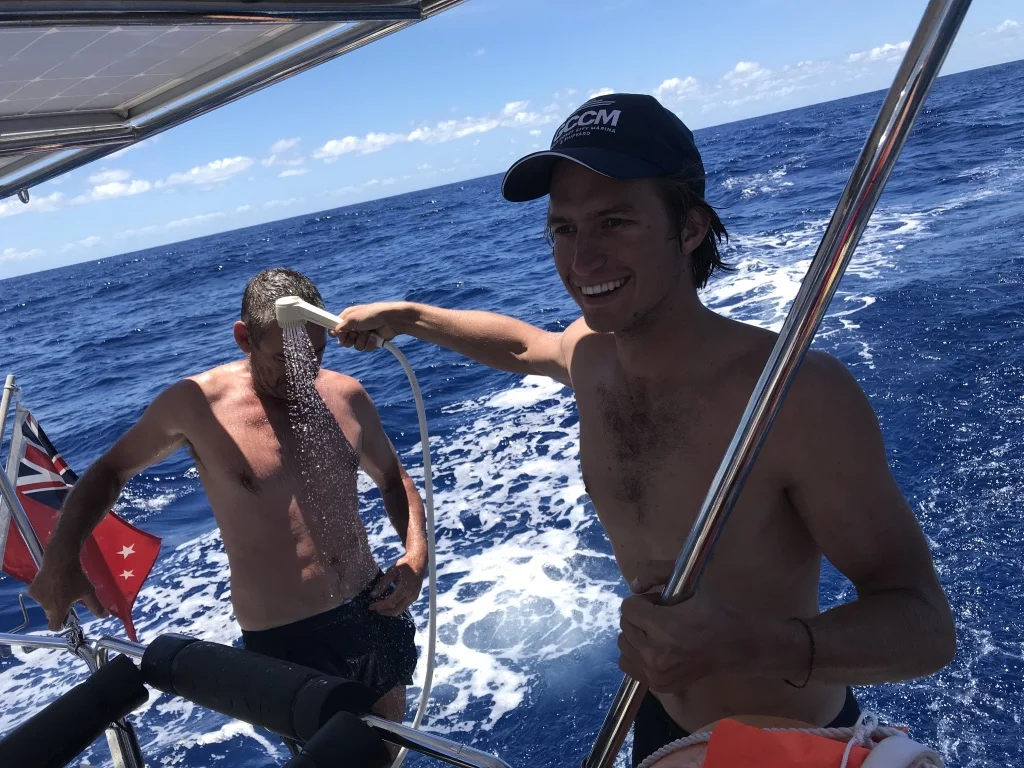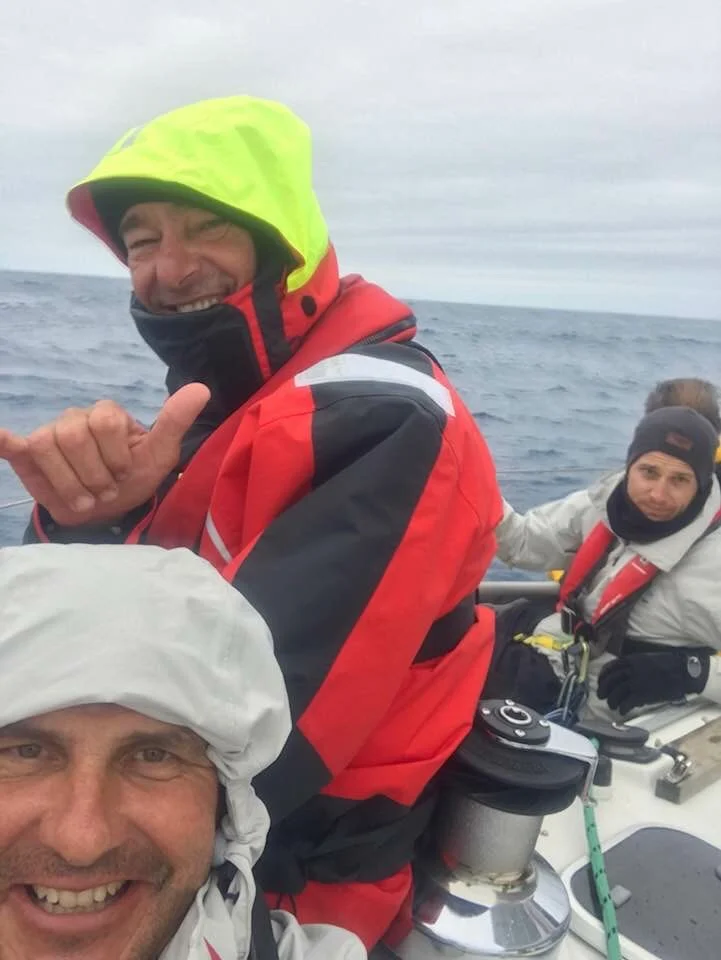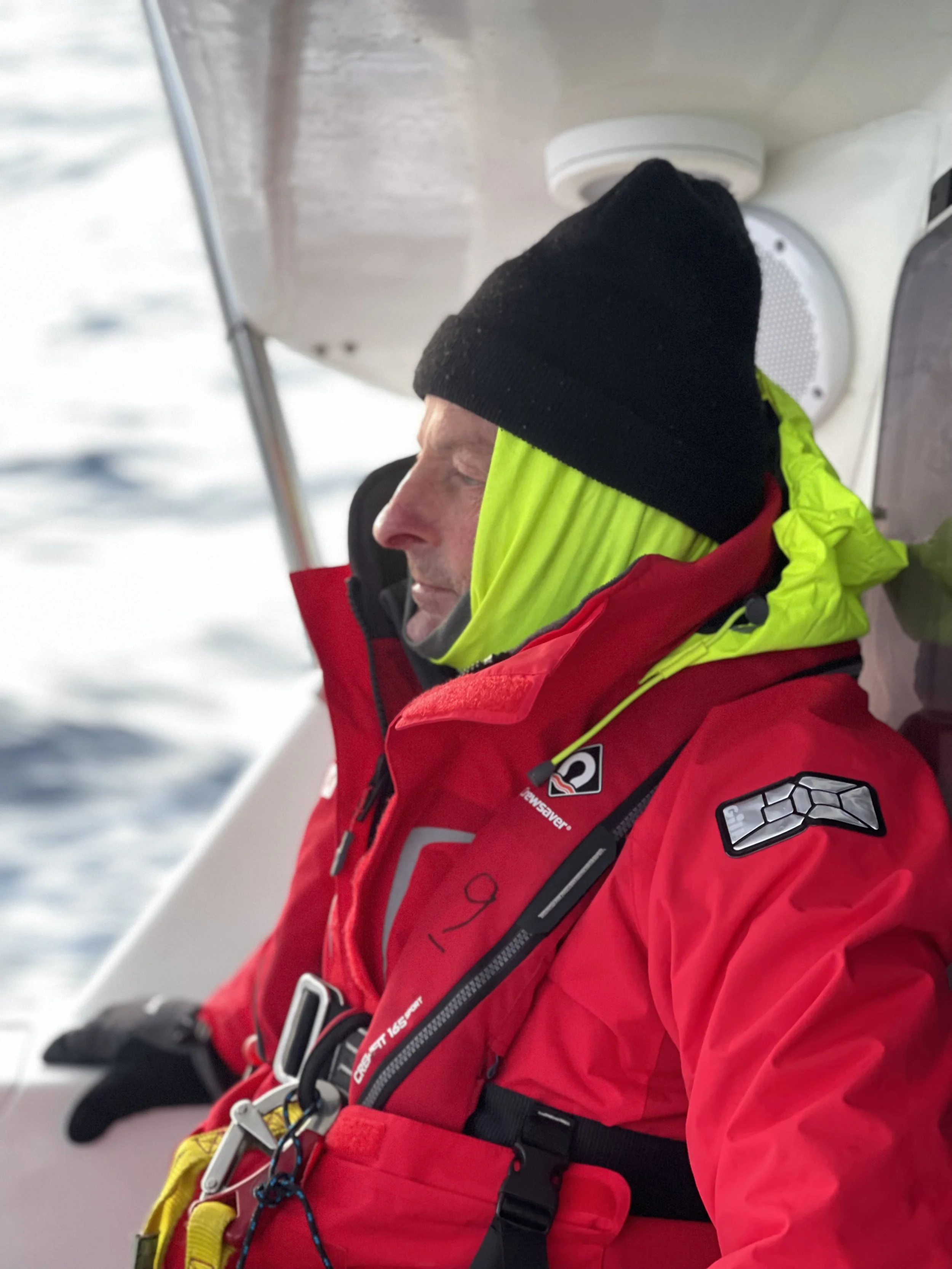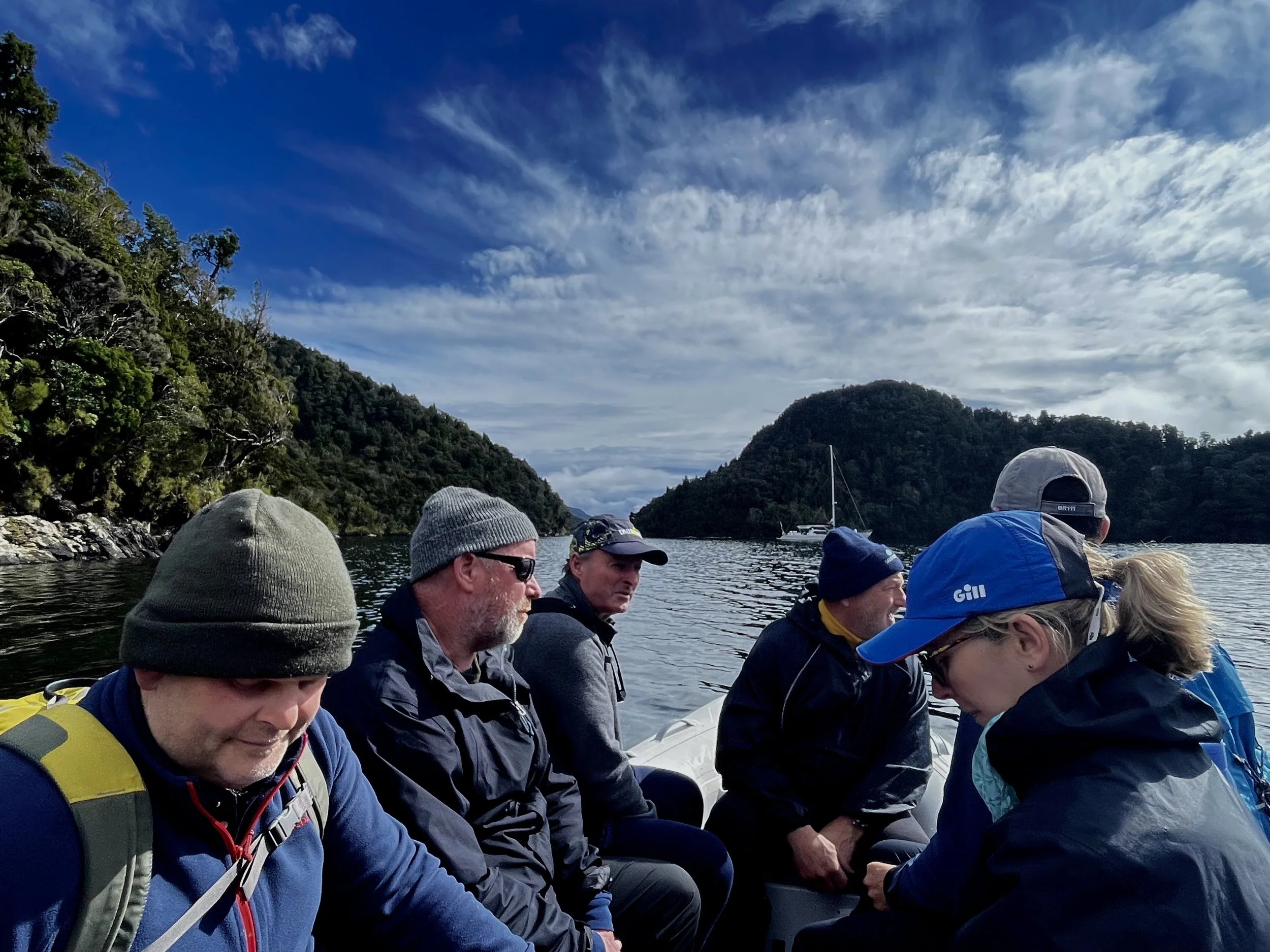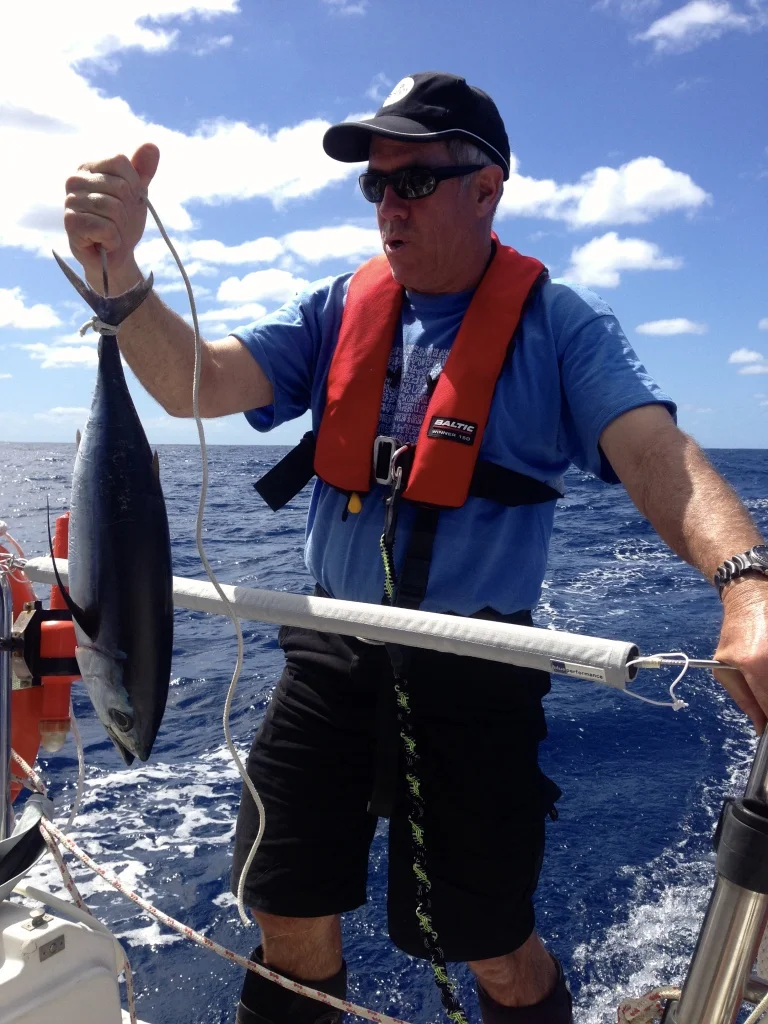Welcome to offshore sailing. If you enjoy sailing offshore, then ocean passages and big regattas add a whole new dimension to sailing. Here are some thoughts on how to make it a great experience for you and your crew.
1. Attitude: Your attitude has a major impact on your enjoyment and those around you. Having a positive and proactive approach to your fellow team members is really important. You will be working and living in a confined space that can get uncomfortable, but a positive atmosphere has a major impact on everyone on board. If you are not feeling great mentally, try and diagnose what you need; is it time out, a sleep, food, hydration, time out of the sun etc. If you deteriorate physically, your mental state will follow.
2. Personal responsibility: As part of the crew on a racing or passage making yacht, you have the responsibility to fulfil your role to the best of your ability and manage your own personal safety, health and well being, so you can enjoy the race and avoid putting yourself and your team at risk.
On an offshore yacht you will experience all sorts of extreme weather and sea conditions and these can have an impact on our ability to sail safely. You are working on a slippery, moving surface with equipment such as halyards, sheets, winches, booms and spinnaker poles that are under heavy load and can cause injury or death, if you end up in the wrong place at the wrong time.
To stay mentally sharp, you need to stay in peak physical condition. This requires managing food intake, energy levels, hydration, sleep, body temperature, sun protection and seasickness. There are lots of variables and the environment changes constantly. Managing these things requires ongoing diligence. It’s also good to keep an eye on your team members around you and check they are staying on track too. Accidents, injuries and damage to the yacht are usually caused by losing mental focus and making poor decisions and these are often triggered by fatigue and declining energy levels.
3. Teamwork / support/ communication: One of the most enjoyable parts of going to sea is the friendship, support and camaraderie of being part of a great team. To make a great contribution to our team spirit there are some things you can do that will make a big difference;
· Be positive and enthusiastic. Have a sense of humour.
· Avoid being negative, sarcastic, overly critical or losing your cool.
· Respect our shared spaces by storing your gear tidily and keeping galley and bathroom areas clean.
· Don’t sulk or give people the silent treatment. If you are happy – say so. If you are not happy, chat to someone about what’s bothering you and work out a plan to deal with it proactively.
· Be enthusiastic about the tasks you need to do to keep the yacht and the crew in good shape. If you want a hot drink, offer to make one for everyone else. If you are grabbing a snack, check who else wants one. When we all take care of each other, everything is easier.
· Check your crew mates are okay. Often crew get hungry, dehydrated, cold or seasick and start to go downhill rapidly. When you don’t feel great, it’s easy to drop your head, not feel like moving and think; “If I just sit here, things will eventually improve”. They rarely do, but the mind can start making poor decisions under stress or fatigue. Check on your teammates regularly on a long passage. Managing health and well-being is an ongoing focus and we all have times when we feel great and not so great – and that’s when we count on our team mates to help us get back on track.
· Communicate: if you are worried about something, see a potential issue with the yacht, see a crew member who does not look well, have an issue with someone else over something that has happened earlier or has been said, its always better to speak up and communicate in a pleasant, respectful and constructive manner. The best teams communicate regularly regardless of whether things are going right or wrong.
· Be proactive and take ownership: Good sailors think ahead and stay proactive. When you are responsible for specific functions on the yacht; plan ahead, communicate, check, fine tune and plan ahead again. If something does not feel right or you think we can make some changes to improve boat operations, teamwork, systems or speed, always speak up and share your thoughts. Continuous improvement is how we get better and better as a team.
· Sometimes you will carry your team and sometimes they will carry you. There are always ups and downs, so just do your best and expect that things won’t always go smoothly.
4. Personal comfort: On an ocean going yacht you are going to face extreme heat and cold, you will get wet, suffer from wind chill, hurt yourself and find it hard to get comfortable sometimes. It’s really important to manage your comfort levels, so you balance staying warm, cool and dry to maintain optimum comfort. Sometimes it’s easy to put off going below to change your clothing and the end result is usually increased discomfort and wishing you had done it sooner. Being comfortable makes it easier to maintain focus and your contribution to the yachts performance and safe operations.
5. Hydration: Your body is about 60% water. A 5% loss in hydration reduces brain function by 25% and leads to a loss of energy, loss of focus, headaches, sleepiness and seasickness. The most classic example is to avoid drinking water regularly, so that you don’t need to go to the toilet in rough weather. This can be time consuming when taking wet weather/safety gear off and there is the worry that ‘if I am in the toilet too long, I might get sea sick as well’. You have to maintain your hydration, which usually means 2 litres of fluids a day (more in hot weather) including water, hot drinks and other cold drinks. Dehydration impacts decision making and can lead to accidents that put both crew and the yacht at risk. If your lips/mouth are dry or you are yawning, they are all symptoms of dehydration.
6. Seasickness: Everyone has different tolerance levels for seasickness and everyone will be sick at some point if the contributing factors line up.
· Do’s: Stay warm, stay hydrated, maintain sleep levels, stay up on deck, keep your eyes on the horizon and avoid reading your phone or books or looking down. If you are not feeling great, get others to bring up food, drinks and clothing for you.
· Don’ts: Avoid alcohol, caffeine, fatty foods and late nights in the 24 hours before going offshore.
· Be proactive – Check the forecast and take seasickness pills in advance of rough weather. Its like insurance, it does not work if you wait until you feel sick, to take it.
· Watch out for your mates – If you see other crew members going downhill, do your best to make sure they are warm, dry, fed and hydrated. Discuss any concerns with the skipper, as its always best to take precautions before someone’s condition deteriorates.
· Sailing through rough weather has a big impact on your stomach muscles, as you use them to brace your body constantly to stay upright. Stretched stomach muscles can often cause discomfort and can be confused with the onset of seasickness, when in fact it’s just strained stomach muscles. Doing sit-ups for 4-6 weeks prior to a big passage or race can help prevent this.
7. Sleep: Managing your sleep can be difficult on long passages, but it is really important for your wellbeing and ability to contribute to boat management, to manage your sleep proactively. Sleeping below can be hot, noisy and rocky depending on temperature and weather and it’s tempting to live on less sleep than you need, but that can cause headaches, seasickness and an inability to concentrate on your tasks on deck.
With overnight passages and races, we will have a watch system in place that will see you on watch with others for between 2-4 hours, once or twice between 8pm and 8am. Broken sleep will cause you to feel tired (and grumpy) during the day following, so take advantage of the opportunity to head below and grab a couple of hours sleep, when the opportunity arises during the day. Think of it as topping up your batteries regularly instead of running them completely flat.
8. Your focus and boat performance : If you join us for an offshore race, part of the challenge is the ability to maintain a high level of focus and boat performance 100% of the time. As a team it’s important to rotate each trimming and helming role regularly to keep people fresh and focused. We should all feel happy to take a break when we start lose concentration and also ask a crew member if they want a break if we start to see them losing focus and affecting sail trim or boat performance.
Long passages and races can have sections that are uncomfortable, boring, hot, cold and difficult. Rotating regularly helps break up roles and keeps our crew fresh and in good shape.
9. Hero’s and risk takers: There are only 3 priorities when it comes to offshore passages and racing;
· Keeping our crew safe.
· Keeping our yacht safe.
· Working together as a team and giving it 100%.
Offshore passage making and racing is very different to bay/day racing. Managing the yacht conservatively to avoid damage and minimise over stressing of sails, hardware and the hull is very important. Great crew members are assets, but poor crew members can become liabilities that can put the welfare of the yacht and team at risk. When we are sailing offshore, we have to be self-sufficient. Help is usually several hours or days away and getting rescued can be dangerous in itself, so it’s better not to put yourself in that position.
With round-the-cans racing, there is often stress and urgency to execute in seconds, as every metre counts. With offshore sailing, what becomes more important is planning ahead, preparing well, minimising risk and making sure safety is our number one priority. With stronger breezes, bigger seas, night sailing and the risk of losing someone overboard; taking time to execute methodically and safely becomes the overriding priority. Taking risks and heroic behaviour is a last resort if all else fails. Getting our yacht and team to our destination without injury or damage is always our biggest achievement. Results come second.
10. Boat management: With offshore passages, changes in wind, weather and sea state create all sorts of challenges. Another risk is damage or loss of equipment due to things working themselves loose and coming undone or chafe causing lines, sails and sheets to wear through and fail. Good management requires us to constantly check that all fittings and shackles are tight and to look for areas at risk of chafe that we can adjust and fine tune.
Keeping updated with weather forecasts and adjusting sails proactively also helps minimise damage. Leaving it too late to reef or reduce sail, puts the yacht and crew at risk. As you walk around the yacht above and below deck, keep your eyes, ears and nose open. If you smell something strange (smoke or toilets), see something that’s out of place (chafing), hear water sloshing in the bilge or a knocking noise then check it out. If something does not seem right – it probably isn’t, so don’t ignore it.
11. Training: Offshore passages are a great opportunity for training. There is a chance to spend time learning each of the crew/helm/navigator roles and also to better understand many of the yachts systems e.g. water, refrigeration, engine, electronics, communication, emergency management etc. Look for opportunities to learn and to teach. It helps make the most of the time on the water and can make some of the monotonous sections of a passage or race pass faster.
12. Safety: Your personal safety and that of the crew and the yacht is a collective responsibility. Offshore sailing has numerous risks that include; cuts, broken bones, fire, hypothermia, drowning, sinking, concussion and being lost at sea. With every step you take and every move you make, it’s important to consider the impact and risks involved. It’s always better to take the time to plan, communicate and assess how difficult a task is and err on the side of caution by getting extra help if you need it.
There is a lot of safety equipment that we invest in and carry onboard to maximise safety and eliminate as many risks as possible. You are responsible for your own safety and need to take it seriously. You will be equipped with PFD’s, whistles, lights, PLB’s (personal locator beacons), safety tethers and wear your own wet weather gear. They take time to put on and take off, when going to bed or the bathroom. The entire process of undressing and/or getting dressed again can take 15-20 minutes, especially if the boat is heeling and going to windward over a lumpy sea. Be patient and enjoy the process, most people would kill to go ocean sailing instead of sitting at a desk in an office.
Falling overboard can be traumatic for you and for the crew. Losing someone overboard is our biggest fear and there is no guarantee you will be found and recovered alive despite all the safety equipment and personal locator beacons. Hypothermia sets in quickly in southern waters and in big seas you are at risk of being injured by the hull of the yacht in the recovery process. You will have a safety tether that you can use to attach yourself to the yacht – use it when required. It’s easier to stay onboard.
Most man overboard situations occur with a knock down, unexpected wave, sail change or gybe and therefore will happen before you have time to respond. Use your safety tether after sunset, in rough weather, when leaving the cockpit, when the spinnaker is up and any other time we are not sailing on a millpond or close to outside assistance.
Some advice: if in doubt use your safety tether. When going forward of the cockpit hold onto rails and safety lines, keep your body weight low by crouching when moving in a swell, take your time and use your shorter safety tether when working at the mast or near the bow. Sailors have drowned when using their 2-metre safety tether while working up at the bow and then getting washed overboard and dragged along underwater on the end of their safety tether.
The best thing you can do is stay on-board. If you see another crew member taking short cuts or unnecessary risks – speak up; safety is everyone’s responsibility. We never want to have to meet with the police or your loved ones and explain how we lost you overboard.
13. Physical fitness/workload management when racing: We are in the unique position of being amateur sailors and competing at a state or national level in events that often include professional racing teams. You’ll join a crew that range in age from 30 to 70 something and that brings all sorts of challenges and opportunities. As a racing crew there are many roles to be performed on-board and many ways to make a contribution. From helming to sail trimming, foredeck management, preparing meals, making hot drinks and grabbing snacks, they are important roles with vastly different requirements in both experience and physicality that we can all play.
It’s important to play to your strengths in whatever roles you enjoy and manage your physical workload to avoid injury through overload/tiredness. Having a racing crew of 10 - 12 means we have the ability to rotate roles and allow for rest and recovery time as well. The is no benefit in overexerting yourself to the point where you bend or break something, that then limits your ability to contribute as an effective crew member.
A lot of the at-risk areas with sailing are; arms, shoulders, stomach muscles and lower back. Helming, winching, trimming sheets, pulling halyards and bracing yourself when going to windward in a lumpy sea and strong breeze is where most of the physical impact takes place. Anything you do increase your strength in these areas is a benefit in offshore sailing.
Always assess how strong and fit you are and manage your workload accordingly. It’s smarter to ask for help or take a break, than to push yourself to the point where you suffer an injury. I have the view that a champion team is made up of people with a variety of strengths and experience to draw upon. We are not professional athletes and our goal is to succeed as a team, make a meaningful contribution individually and take satisfaction out of “punching above our weight”.
Success to me is measured by ‘how we go about our work and how we take care of each other’, not how many trophies we win. If we take care of each other, work effectively together, enjoy learning new skills, always give 100% and have some fun along the way, then the results will come.
14. Sun protection: Sun is one of the biggest threats with long periods of time on the water. Excess sun will cause overheating, sunburn, dehydration, fatigue and seasickness. It’s important to manage your exposure to the sun each day. Wear clothing that reduces exposure, such as hats, sunglasses and long sleeved shirts. Manage your time in direct sun, by using shade created by the sails or sleeping below to reduce excess exposure. Increased time in the sun and hotter temperatures will increase your water intake requirements. Excess sun combined with dehydration will cause headaches, tiredness and even seasickness. Even on cloudy days 70% of the suns UV gets through. If you get burnt, it’s sunburn and not wind burn. Use sun-cream proactively. If you get burnt you will have an unpleasant trip and find sleeping difficult as well.
15. Summary: Enjoy your sailing, you will never wish you spent less time on the ocean!
Find out more about joining us for ocean racing and regattas or ocean passages. Check the sailing calendar.


